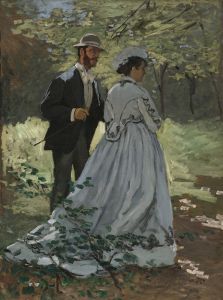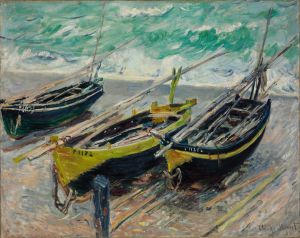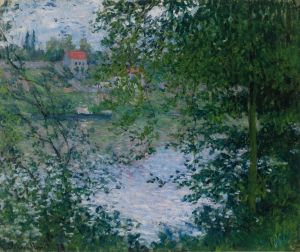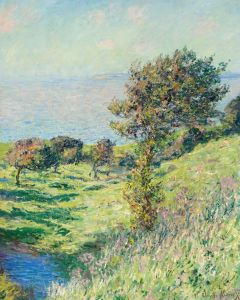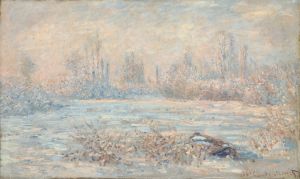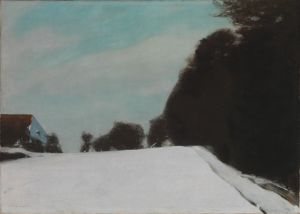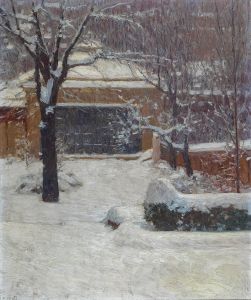
Lavacourt, l’hiver
A hand-painted replica of Claude Monet’s masterpiece Lavacourt, l’hiver, meticulously crafted by professional artists to capture the true essence of the original. Each piece is created with museum-quality canvas and rare mineral pigments, carefully painted by experienced artists with delicate brushstrokes and rich, layered colors to perfectly recreate the texture of the original artwork. Unlike machine-printed reproductions, this hand-painted version brings the painting to life, infused with the artist’s emotions and skill in every stroke. Whether for personal collection or home decoration, it instantly elevates the artistic atmosphere of any space.
"Lavacourt, l’hiver" is a painting by the renowned French Impressionist artist Claude Monet. Created in 1880, this work is part of Monet's extensive exploration of the effects of light and atmosphere on the landscape, a hallmark of his artistic style. The painting depicts the small village of Lavacourt, located on the banks of the Seine River near Vétheuil, where Monet lived for a period of time.
Monet's choice of Lavacourt as a subject reflects his deep connection to the region and his fascination with capturing the transient effects of weather and light. The painting is set in winter, a season that Monet frequently depicted to explore the interplay of light on snow and ice. In "Lavacourt, l’hiver," Monet captures the serene and muted tones of a winter landscape, with the village partially obscured by a blanket of snow. The composition is characterized by its soft, diffused light, which Monet masterfully renders through his use of color and brushwork.
The painting exemplifies Monet's Impressionist technique, characterized by loose brushstrokes and a focus on the overall impression of a scene rather than detailed realism. This approach allows Monet to convey the atmospheric conditions and the chill of winter air, inviting viewers to experience the scene as if they were present. The palette is dominated by cool blues and whites, punctuated by subtle hints of warmer tones that suggest the presence of sunlight filtering through the winter sky.
Monet's time in Vétheuil and Lavacourt was a period of both personal and artistic significance. He moved to Vétheuil in 1878, during a challenging time in his life marked by financial difficulties and the illness of his wife, Camille. Despite these hardships, Monet's work from this period is noted for its innovation and experimentation with light and color. "Lavacourt, l’hiver" is a testament to Monet's ability to find beauty and inspiration in his surroundings, even during difficult times.
The painting is part of a series of works Monet created depicting Lavacourt and the surrounding area in different seasons and weather conditions. This series reflects Monet's dedication to capturing the changing qualities of light and atmosphere, a pursuit that would define much of his later work. "Lavacourt, l’hiver" stands out for its serene depiction of a winter landscape, showcasing Monet's skill in rendering the subtle nuances of light and shadow.
Today, "Lavacourt, l’hiver" is held in high regard as an example of Monet's Impressionist style and his ability to convey the ephemeral beauty of nature. The painting is part of the collection at the Petit Palais in Paris, where it continues to be appreciated by art enthusiasts and scholars alike. Monet's work, including "Lavacourt, l’hiver," remains influential, inspiring generations of artists to explore the interplay of light, color, and atmosphere in their own work.





